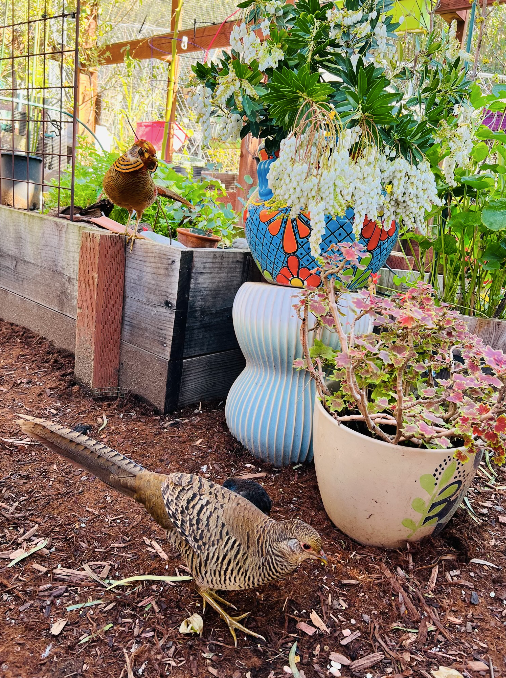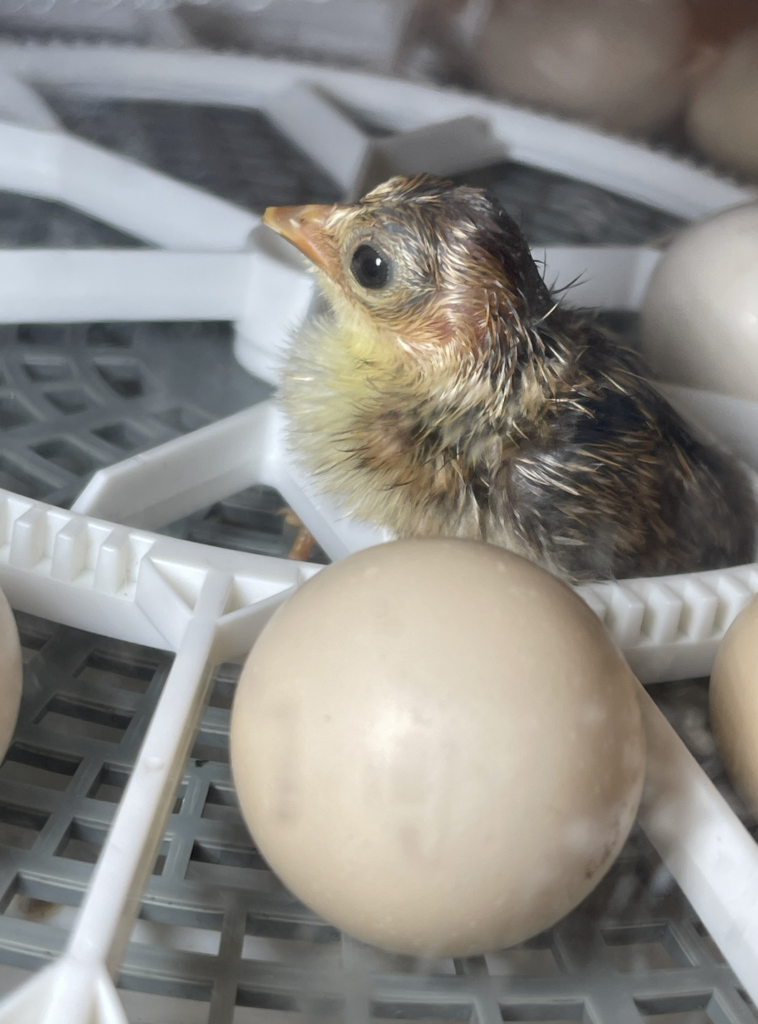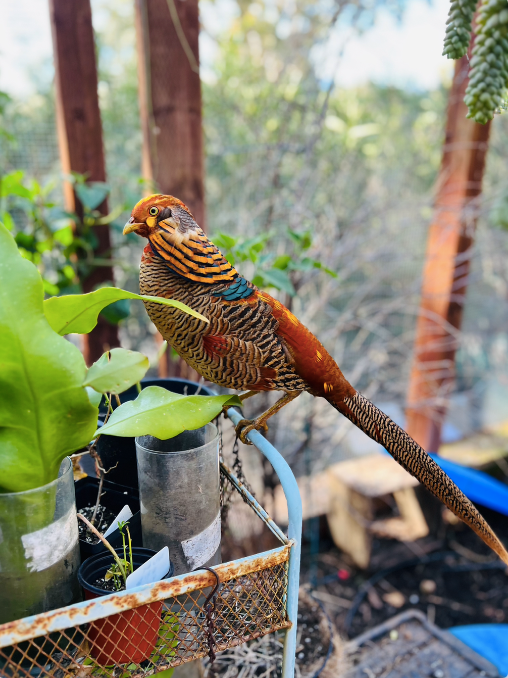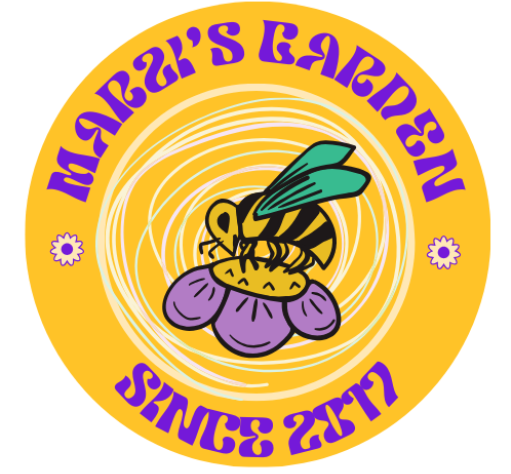Join me in discovering the vibrant world of Golden Pheasants and their captivating journey in my aviary garden.

It all started when my dear friend, a seasoned golden pheasant enthusiast with 15 years of experience, inspired me to embark on an adventure with these magnificent birds. Intrigued by their beauty, I decided to create a suitable habitat for them in my aviary garden, alongside my beloved Coturnix quails. Fortunately, the enclosure for my quails was already in place, making it the perfect home for my new feathered friends.
Golden pheasants, renowned for their striking plumage and graceful presence, lay eggs only once a year, following the natural rhythm of most wild birds. Filled with anticipation, I took on the role of incubating nine precious eggs. The excitement grew as six of these eggs successfully hatched, and I introduced them to the aviary after 10 days. These little birds grow quickly.




Raising golden pheasants comes with its surprises. Determining their gender required months of patient observation. Eventually, I had to say goodbye to my female pheasants after six months, keeping only two beautiful males. In the end, Marzi’s Garden welcomed two magnificent male golden pheasants, who embarked on a transformational journey, molting their first feathers at around ten months of age. What emerged were feathers of unrivaled beauty, showcasing a palette of vibrant colors that added a new dimension of elegance to our sanctuary.



Golden pheasants are not just captivating to observe; they also bring an aura of wild majesty to our space. As they gracefully move through their enclosure, their iridescent plumage catches the sunlight, creating a mesmerizing play of colors that captivates the soul.


In Marzi’s Garden, you’ll find a collection of photographs that capture the regal demeanor and exquisite beauty of these birds. Each photo tells a story of nature’s artistry and the unique charm these birds bring to our lives. I named my two males Yoda and Syd, who get along well with my quails and have chickens as their neighbors.


Let’s delve deeper into the world of golden pheasants and learn more about these captivating creatures:
The Yellow Golden Pheasant (Chrysolophus pictus mut. luteus)
The Yellow Golden Pheasant, also known as the Ghigi’s Golden, is a captivating color mutation of the Red Golden Pheasant often found in captivity. This mutation, developed by Professor Alessandro Ghigi in 1952, replaced the red and blue colors of the Red Golden Pheasant with striking yellow plumage. Yellow Golden Pheasants make for a popular aviary bird and are known for their vibrant feathers and charming disposition. These birds are easy to care for and can withstand various weather conditions.


Breeding and Care
Hens typically lay many eggs in their first year, with each egg taking 21-23 days to incubate. They lay a small-sized pale cream-colored egg. Collecting eggs throughout the day and marking them with a pencil is a good practice to keep track of incubation. Hens may be broody, but it’s often best to incubate the eggs yourself. They are known for their ability to tolerate severe weather conditions, making them a hardy addition to any aviary.


So, whether you’re a seasoned pheasant enthusiast or just curious about these stunning birds, I invite you to explore the enchanting world of Golden Pheasants through the lens of Marzi’s Garden. Enjoy the photos, and let them inspire you to appreciate the wonder and splendor of these magnificent creatures.
As we dive deeper into the world of golden pheasants, there are more intriguing aspects to explore.
Egg Laying and Incubation
Golden pheasants, like many wild birds, lay eggs once a year. They typically lay one egg a day or every other day in a clutch, starting from April and continuing through July, depending on the local climate and conditions. The incubation period usually lasts 21 to 23 days. During this time, it’s essential to provide a suitable environment for incubation.

Hens can be broody, but some may not exhibit this behavior. To maximize the chances of successful hatching, collecting the eggs throughout the day and marking them with a pencil (avoid markers as the ink can seep into the embryo) is recommended. This helps keep track of the incubation process and ensure the health of the developing embryos.


Caring for Golden Pheasants
True to their name, golden pheasants are remarkably adaptable to various weather conditions, making them a hardy addition to your aviary. These birds can endure both sweltering heat and chilly cold with minimal need for shelter. However, there are some key aspects to consider when caring for them to ensure their health and well-being.
Feeding Your Golden Pheasants
Proper nutrition is vital for the health and vitality of your golden pheasants. A well-balanced diet is crucial, and this typically includes game bird feed as the primary source of nutrition. Supplement their diet with grains and seeds to ensure they receive the necessary nutrients.


Note from Marzi:
In my aviary, I’m fortunate to have a garden that provides an array of fresh fruits and vegetables, which all my feathered friends enjoy. Golden pheasants, in particular, have a fondness for nuts and seeds, with raw peanuts being a special treat. They also have a penchant for berries, and I’ve cultivated various berry plants within my aviary garden to cater to their preferences. These feathered friends love currants and other berries, and I sometimes have to cover these plants to save some fruits for myself! You can watch them relishing berries in action on my YouTube video .
This natural, garden-fresh addition to their diet complements their nutrition and adds to their overall well-being. It’s a joy to witness these vibrant birds savoring the bounties of our garden, and it’s a testament to the unique connection I share with them in Marzi’s Garden.


The Yellow Golden Pheasant
As previously mentioned, the Yellow Golden Pheasant, also known as the Ghigi’s Golden, is a captivating color mutation of the Red Golden Pheasant. This unique variation was created by Professor Alessandro Ghigi in the 1950s, and today, it’s a popular aviary bird. Their striking yellow plumage, orange ruff, and black barring on the wings make them a beautiful addition to any collection of pheasants. The male’s eyes turn yellow, while the female’s eyes remain brown.
Enjoying Marzi’s Garden
Marzi’s Garden is not only a sanctuary for golden pheasants but also a place where nature’s artistry comes to life. The images I’ve captured showcase the regal demeanor and exquisite beauty of these birds, offering a glimpse into their world. From the captivating colors of their plumage to the graceful way they move, these photos tell a story of the unique charm these birds bring to our lives.
Whether you’re a seasoned pheasant enthusiast or someone who simply appreciates the beauty of nature, I invite you to immerse yourself in the world of golden pheasants through the lens of Marzi’s Garden.
Enjoy the photographs and let them inspire you to cherish the wonder and splendor of these magnificent creatures.


Thank you for joining me on this journey with my golden pheasants, and I hope you continue to explore their captivating world. If you have any questions or want to share your own experiences with these birds, please feel free to do so in the comments below.
Disclosure: This post may contain affiliate links to products (including Amazon). I’ll earn a small commission if you make a purchase through my link, at no additional cost to you! Regardless, I only link to products that I personally use on our homestead or believe in.


